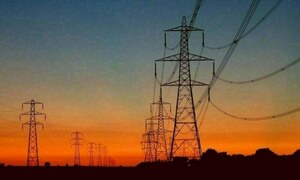According to a press report, Sindh's agriculture sector, from which comes the ruling elite of that province, paid only Rs 7 million as farm tax till November and about Rs 36 million as water charges (abiana). Which is a pittance considering that the period covers the 'kharif' season when the three main cash crops - cotton, rice and sugarcane - are grown and sold.
In fact, the provincial government had set the target at Rs 336 million for the current fiscal year. The other major crop, wheat, is yet to be harvested, but at the present rate of collection, only a miracle could help achieve that target. To put things in perspective, the report mentions that in 2000-01 the Sindh government farm tax collection stood at Rs 444.77 million.
Taking into account the current runaway inflation, in today's value that amount would be much higher than that. For some reason the farm tax collection has been on a downward slide since 2002-03. That, of course, does not mean the size of cultivable land has shrunk; it shows an increasing number of landowners have been shirking their tax obligations.
To say the least, it is sad that this privileged class should not pay even farm tax, which is levied on the basis of farm size - at a nominal rate of Rs 200 per acre - rather than the income agricultural production generates. The country being a predominantly agrarian economy it is a travesty of justice that our agriculture sector should have remained exempt from income tax for as long as it has.
From time to time, people have cited the fairness principle to demand that like people in other areas of economic activity, those engaged in agriculture must also pay income tax. The argument has failed to go far primarily because the state's power structures are dominated by big landowners. On the one hand they derive their political influence from their privileged status in society and on the other they use the excuse of high costs and low returns to claim immunity from income tax.
Only last month the Sindh Chamber of Agriculture held a special meeting to express its concern over an agriculture tax proposal that the federal government is said to be considering in line with the recent IMF agreement. As usual the chamber president complained of exorbitant water and fertiliser costs to urge the government to drop the proposal.
The fact of the matter is that the federal as well as provincial governments continually resort to interventions by way of subsidies, both at the input and output ends, to help agriculturists, with most of the benefits going to big landowners.
In the case of Sindh, for example, aside from giving support to wheat price the government also heavily subsidies its irrigation system. According to one estimate, during the last ten years more than Rs 25 billion have gone into irrigation subsidy whereas 'abiana' payments almost always tend to fall far short of the target.
Our rich and the powerful 'landed gentry' have enjoyed a free ride for far too long at the expense of ordinary citizens. The economy being in dire straits at present, it is about time the government ends its lax attitude toward this class. Instead of levying farm tax on the basis of land size, it must introduce agricultural income tax, ensuring also that it is collected, too.
BR100
11,697
Decreased By
-168.8 (-1.42%)
BR30
35,252
Decreased By
-445.3 (-1.25%)
KSE100
112,638
Decreased By
-1510.2 (-1.32%)
KSE30
35,458
Decreased By
-494 (-1.37%)

























Comments
Comments are closed.